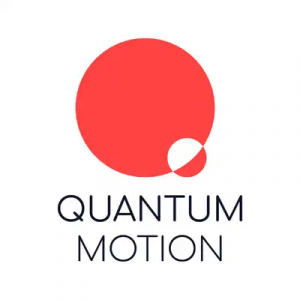LONDON, Feb. 8, 2024 — Quantum Motion, a UK-based quantum computing scale-up founded by Professor John Morton, University College London (UCL), and Professor Simon Benjamin, University of Oxford, has been selected by the UK’s National Quantum Computing Centre (NQCC) to build a quantum processor test bed for its site in Oxfordshire.
 Quantum Motion’s prototype system will be based on the same silicon MOS platform used throughout the consumer electronics industry today, while the test bed forms part of NQCC’s vision to enable the UK to solve some of the most complex and challenging problems facing society by harnessing the potential of quantum computing.
Quantum Motion’s prototype system will be based on the same silicon MOS platform used throughout the consumer electronics industry today, while the test bed forms part of NQCC’s vision to enable the UK to solve some of the most complex and challenging problems facing society by harnessing the potential of quantum computing.
The UK hosts some of the most exciting quantum computing companies in the world, and the NQCC is assembling many of these different approaches into one facility to provide access for academics, researchers and public sector communities to conduct test projects, feasibility studies and discovery-led science. This will be the first quantum computing test bed delivered into the NQCC that is based on conventional silicon manufacturing processes. It will demonstrate the ability to deliver a quantum computer that harnesses the practicality and scalability of established semiconductor fabrication techniques. In turn, this proof-of-concept will accelerate the transition from prototype systems to commercialization.
James Palles-Dimmock, CEO of Quantum Motion, said, “The strategy at Quantum Motion is about more than delivering qubits; it is about delivering a scalable, integrated quantum architecture capable of building systems of sizes yielding real value. This includes developing the elements needed to operate a quantum computer, such as world-leading cryo-electronics and automated control, along with a prototype quantum processor manufactured using a standard CMOS process.”
Dr. Michael Cuthbert, NQCC’s Director commented, “NQCC seeks to accelerate the development of the UK’s quantum computing capabilities and infrastructure. There is a growing realization across the industry that quantum developers need access to the hardware to engineer scalable solutions for a full-stack quantum computer. Once built, these system-level prototypes will help the NQCC and its collaborators to understand the unique characteristics of different hardware approaches, establish appropriate metrics for each qubit architecture, and explore the types of applications that benefit most from each technological approach. That will feed directly into the NQCC’s ongoing engagement with organisations across academia, industry, and government to develop use cases for early-stage quantum computers, and to identify the innovations that will be needed to accelerate the development and adoption of this transformative technology.”
The NQCC test beds, such as the one developed by Quantum Motion, will enable researchers to understand how quantum algorithms perform on real quantum hardware. They will help explore the functionality and feasibility of different approaches to building quantum processors, and ultimately aim to establish the most promising routes towards the first commercially available quantum computers able to run useful applications.
In order to develop scalable quantum computers, Quantum Motion has developed key expertise in four critical areas:
- High-density silicon qubits: The ability to design and operate qubits with typical dimensions less than 100 nanometers, enabling dense quantum processors with millions of qubits produced using a conventional, scalable CMOS process
- Quantum processor architectures: Word-class expertise in fault-tolerant quantum computer architectures and error mitigation, allowing QPU design tailored to different target applications
- Cryo-electronics: Industry-leading expertise in building integrated circuits that function at temperatures close to absolute zero, alongside operating quantum processors
- Machine Learning Control: Development of machine learning algorithms that automatically tune and maintain the performance of quantum devices, producing a plug-and-play system.
Drawing on the existing knowledge, scalability, uniformity, as well as economic advantages of semiconductor technology used in most of today’s silicon chips, Quantum Motion has achieved a series of peer-reviewed and record-breaking milestones that highlight silicon’s potential to be the fastest, most cost-effective, and scalable way of producing the millions of qubits needed to create fault-tolerant quantum computers. Their developments, such as integrated circuits capable of generating and processing signals at deep cryogenic temperatures, and demonstrations, such as the mass characterization of thousands of multiplexed quantum dots fabricated in a tier one foundry, underline the company’s advantage.
About Quantum Motion
Quantum Motion is developing a revolutionary technology platform: not just a qubit, but a scalable array of qubits based on the ubiquitous silicon technology already used to manufacture the chips in smartphones and computers. The company is developing fault tolerant quantum computing architectures that are compatible with CMOS processes. Fault tolerant quantum processors will support the most powerful quantum algorithms, targeting solutions to currently intractable problems in fields as diverse as chemistry, materials science, medicine and artificial intelligence. The company employs 50 people, comprising specialists in quantum theory, engineering and software.
Source: Quantum Motion

























































